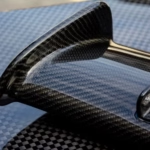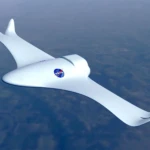Master the art of stainless steel CNC processing
Stainless Steel – A separate name evokes images of strength, durability and corrosion resistance. This is the main material for countless industries, from demanding aerospace and medical applications to smooth architectural features and powerful food processing equipment. However, leveraging its benefits through CNC machining presents unique challenges requiring respect and expertise. As a professional five-axis CNC machining manufacturer, Greatlight faces these challenges every day, providing precise components that meet the highest standards.
At Greatlight, with our advanced five-axis machining center and extensive experience, we hone our skills in machining this tough but tricky material. Successfully machining stainless steel is not just brute force. It’s about smart strategies, meticulous planning and profound understanding. Here are our basic tips for in-depth research on conquering stainless steel:
Understanding your stainless steel: Material grades are very important
- Austenitic (303, 304, 316, 316l): The most common group. Provides excellent corrosion resistance and profile. However, they work quickly and generate a lot of heat. The lower carbon content of 316L enhances weldability and is critical for medical/biotechnology.
- Martensite (410, 420, 440c): Compared with the austenite grade, it is harder and stronger, and it can usually be heat treated, with good wear resistance, but has less corrosion resistance. If processed without proper pre/post heating treatment regimen, cracking is prone to occur.
- Ferrite (430): Medium corrosion resistance and good formation but low strength. It may easily accumulate during processing.
- Duplex (2205, 2507): Combining austenite and ferrite structures provides very high strength and excellent corrosion resistance. Extremely powerful in tools, requiring highly rigid and controlled processes.
- Precipitation hardening (17-4ph, 15-5ph): High intensity achieved through heat treatment back Processing. Pre-hardening state and precise final heat treatment plan need to be carefully set.
- hint: always Confirm the exact grade and condition (annealing, hardening, etc.). Working with manufacturers, such as Greatlight, ensures that the correct rating is selected for your application’s functionality and Processability requirements.
The right tool for hard work: Carbides are kings, geometry is crucial
- Carbide Tools: Carbide tools are harder than high-speed steel (HSS) and are essential for any serious stainless steel processing. It can withstand higher temperatures and resist much better. Select submicron cereal or powder metal grade for toughness.
- Optimized geometry: Tools require specific geometry:
- Sharp cutting edge: Minimize work hardening and cutting forces.
- Positive rake angle: Reduce cutting pressure and heat generation, and promote chip evacuation.
- Powerful tool body and reduce flute count: Ensure stiffness fights the hardness of the material and avoids tremor/vibration (3-4 flutes).
- Large polished flute: Promote smooth chip flow to prevent re-cutting and accumulation.
- Advanced paint: TIALN (titanium nitrogen) or Altin (with higher contents of aluminum nitride) coatings greatly improve tool life by preventing heat, reducing friction (reducing the risk of blowing) and enhancing hardness. Diamond paint is perfect for completing austenite scores, but is brittle.
Rigidity is not negotiable: workers and machines power
- Machine stability: Stainless steel machining requires machines with high static and dynamic stiffness, sufficient torque and torque over the entire RPM range. Our five-axis platform is designed for this function and vibration control.
- Bulletproof labor: The parts must be clamped firmly to eliminate any movement. Vacuum plates, specialized litigation or custom fixtures with aggressive jaws, are often required, especially for complex parts. Five axes minimize refixation, essentially increasing the stiffness of complex geometries.
- Short tool dangling: Use the shortest tool holder and the shortest flute length to maximize rigidity. Any tool whip or chat will destroy the edges and destroy the finish.
Temperature and chip control: composition or destructive factors
- Positive coolant strategy: Flood coolant is crucial! It has three key purposes:
- Extract calories: Rinse heat away from the cutting area.
- lubricating: Reduce friction between chip/tool and tool/workpiece.
- Chip evacuation: Prevent the chip from soldering to tools or workpieces (fireplaces). High pressure coolant system (> 1000 psi) is very beneficial.
- Air explosion (coolant is not feasible): For certain operations or materials, a carefully oriented air explosion with a lubricant mist can help clear the chip without the need for heat shock issues (related to hardened martensite steel). Use with caution.
- Chip management: Continuous, effective chip evacuation is crucial. Recycling chips is a fast track for tool failures. Optimize feed/speed and tool paths to ensure chip rupture and evacuation. Looking for tightly curled "6" or "9" Indicates good chip formation.
- Positive coolant strategy: Flood coolant is crucial! It has three key purposes:
Punching parameters: speed, feed, cutting depth
- Surface velocity (SFM): Usually lower than aluminum or carbon steel. See tool manufacturer’s recommendations specific to stainless steel grades and tools:
- Austenitic (e.g., 304): ~100-350 sfm
- Martensite (e.g. 410): ~80-250 SFM
- Duplex/pH: Usually below 200 SFM
- notes: It is wise to be conservative and add when monitoring tool wear.
- Feed rate (IPT): Keep each tooth consistent and sufficient chip load. Running too slowly Increase Work hardened. Use the feed high enough to make it under the working layer. Inadequate feeding is a common mistake.
- Cutting depth: Provides higher depth and stiffness. The shearing that supports fit exceeds the depth, thus seriously conflicting with the existence of the preservation tool.
- Axial depth of cutting (DOC): Stay gentle to manage chip load/heat buildup on each flute. Deep pockets may need to be lowered.
- Radial depth of cutting (step): Use higher values for roughing (e.g., 40-70% of tool diameter) to absorb more tips, resulting in chips that can effectively remove heat. To complete it greatly reduces.
- Uninterrupted processing: Avoid living or re-cutting previously processed surfaces without large cuts as this will quickly use the material.
- Surface velocity (SFM): Usually lower than aluminum or carbon steel. See tool manufacturer’s recommendations specific to stainless steel grades and tools:
- End point: Achieve perfection
- Parameter adjustment: A substantial reduction in radial DOC (down to 5-15% of tool diameter) usually increases the speed slightly (in range) and ensures a consistent feed rate to maintain a smooth effect. Almost completely used to climb the mill.
- New, precise tools: Finishing requires sharp tools specifically designated for the final pass – never use a rougher renovation pass on stainless steel.
- Tool route strategy: Use a lightweight, continuous downward buck ("scallop" or "waterline") or a continuous strategy to avoid stay markings and uneven wear.
- Greverlight Advantage: Our five-axis capability allows complex continuous profiles to be set up without multiple times, providing excellent surface integrity on complex parts commonly found in aerospace and medical equipment manufacturing.
Advanced tip: Take advantage of the five-axis function
In addition to the complex geometry, our five-axis machines also provide inherent advantages for stainless steel:
- Best tool direction: The cutting tool perpendicular to the surface is constantly oriented to minimize shear forces and improve chip evacuation paths, thereby reducing bending moments on the tool.
- Single setup accuracy: Eliminating multiple fixed settings reduces the possibility of misalignment, improves position accuracy for complex parts, and ensures maximum rigidity as no reprocessing is done.
- Deep intimate entry: Fishing The tool provides better access to deep pockets and undercuts, while the 3-axis can be challenging or impossible, thus maintaining tool stiffness and allowing proper coolant application.
- Reduce chats: The direction and method to minimize vibration can be found through strategic positioning achieved by five axes.
Conclusion: Precision, Power and Partnership
CNC machining of stainless steel is undeniably challenging, requiring respect for the nature and toughness of its work. But with the right knowledge, robust equipment, rigid workers, precise tools, carefully adjusted parameters, and flooded coolant, excellent results can be achieved. Success depends on understanding the specific grade, controlling heat and chips, and maintaining stiffness throughout the process.
For mission-critical components, the properties of stainless steel are crucial and working with expert manufacturers is crucial. GreatEquipped with state-of-the-art five-axis CNC technology and extensive experience in dealing with the toughest stainless steel machining challenges, it has obvious advantages. Not only do we understand the complexities outlined above, but we can also execute them under a roof, handling everything from complex machining to precise completion – effectively delivering high-fusion parts. Our expertise transforms the challenge of stainless steel into a durable, precise, and high performance reality.
Are you ready to break through the boundaries of stainless steel processing? Greatlight offers equipment, expertise and integrated post-processing services to make your most demanding projects accurate and reliable. Customize precision stainless steel parts now at the best prices!
FAQs for Stainless Steel CNC Processing
Q: Why is stainless steel difficult to drive?
A: Stainless steel presents challenges due to a variety of factors: it is used quickly when cutting (increasing tool wear), has high strength to produce significant cutting forces, shows low thermal conductivity to trap heat in the cutting zone, and is prone to occur/built-in edges. Its resilience requires powerful tools and settings.
Q: Which type of cutting tool is best for stainless steel CNC machining?
A: Carbide tools are crucial. Find tools with specific geometry: positive rake angles, large flutes that are polished for clearing chip clearance, reduced flute count (rigidity 3-4), sharp cut edges, and coatings such as Tialn or Altin for heating and reducing friction. Tool geometry and substrate toughness (e.g., submicron grains) are crucial.
Q: Is stainless steel faster or slower than aluminum?
Answer: Slower. The surface speed (SFM) of stainless steel is usually 60-80% lower than that of aluminum. Always refer to the tool manufacturer specifications for specific stainless steel grades and tools. Running too fast can generate too much heat and damage the edges of the tool.
Q: Why is coolant so important when processing stainless steel?
A: Coolant plays three crucial roles: (1) cool down: Remove heat from the cutting zone and tool to prevent overheating and thermal deformation. (2) lubricating: Reduce friction to combat accumulation and minimize built-in edges. (3) Chip evacuation: Flush the chip to prevent re-cutting, thus quickly destroying the tool and work surface. High pressure coolant (> 1000 psi) is very beneficial.
Q: What causes hardening of work during processing and how can I prevent it?
Answer: When the stainless steel deforms without sufficient heat to soften it, strengthening work (cold work) will occur. Key reasons for processing include: Dull tools,,,,, The progress rate is too slow,,,,, Inadequate shear depth (Friction instead of cutting) or Residential This tool. Prevention strategies involve using sharp tools, maintaining appropriate feed rates, using sufficient DOC and continuous coolant flow. Five-axis machining can be helpful by allowing optimized tool participation paths.
Q: What are the signs of my stainless steel processing parameters?
Answer: Key signs include:
- Fast or excessive tool wear/debris
- Poor surface effect (roughness, chat, tear)
- Discoloration (blue/brown) on the workpiece or tool (indicates too much heat)
- Audible vibration or tremor
- Chip changes form (e.g., like dust or very long debris – aimed at tightly curled goals "6" or "9").
- The edge of the Burr is formed.
Q: Why choose a five-axis CNC machinery workshop, such as the stainless steel parts of Greatlight?
A: Five-axis machining provides different advantages for complex stainless steel components:
- Complex geometric processing: Generate complex contours, deep cavity and undercuts in a single setup.
- Enhanced rigidity and accuracy: Maintain part stability and dimensional accuracy without re-fixing.
- Best tool path: The tool is ideally oriented to minimize pressure, improve chip flow, and generally have better access to coolant.
- Top surface finish: Continuous contours lead to smoother finishes on complex surfaces.
- Delivery time: Fewer settings mean that complex parts are produced faster. For demanding stainless steel projects, with complex designs, five-axis is usually the most efficient and highest-quality solution.
Q: Can Greatlight handle the completion of the requirements after completion?
Answer: Absolute. As a comprehensive service provider, Greatlight offers a full range of post-processing services tailored for stainless steel, including precision burrs, various polishing levels (vibration, hand, power, power), passivation corrosion resistance, heat treatment (pH grade), dedicated cleaning (EG, ultra vibration medical) and non-fouling testing. We offer true one-stop manufacturing.

















